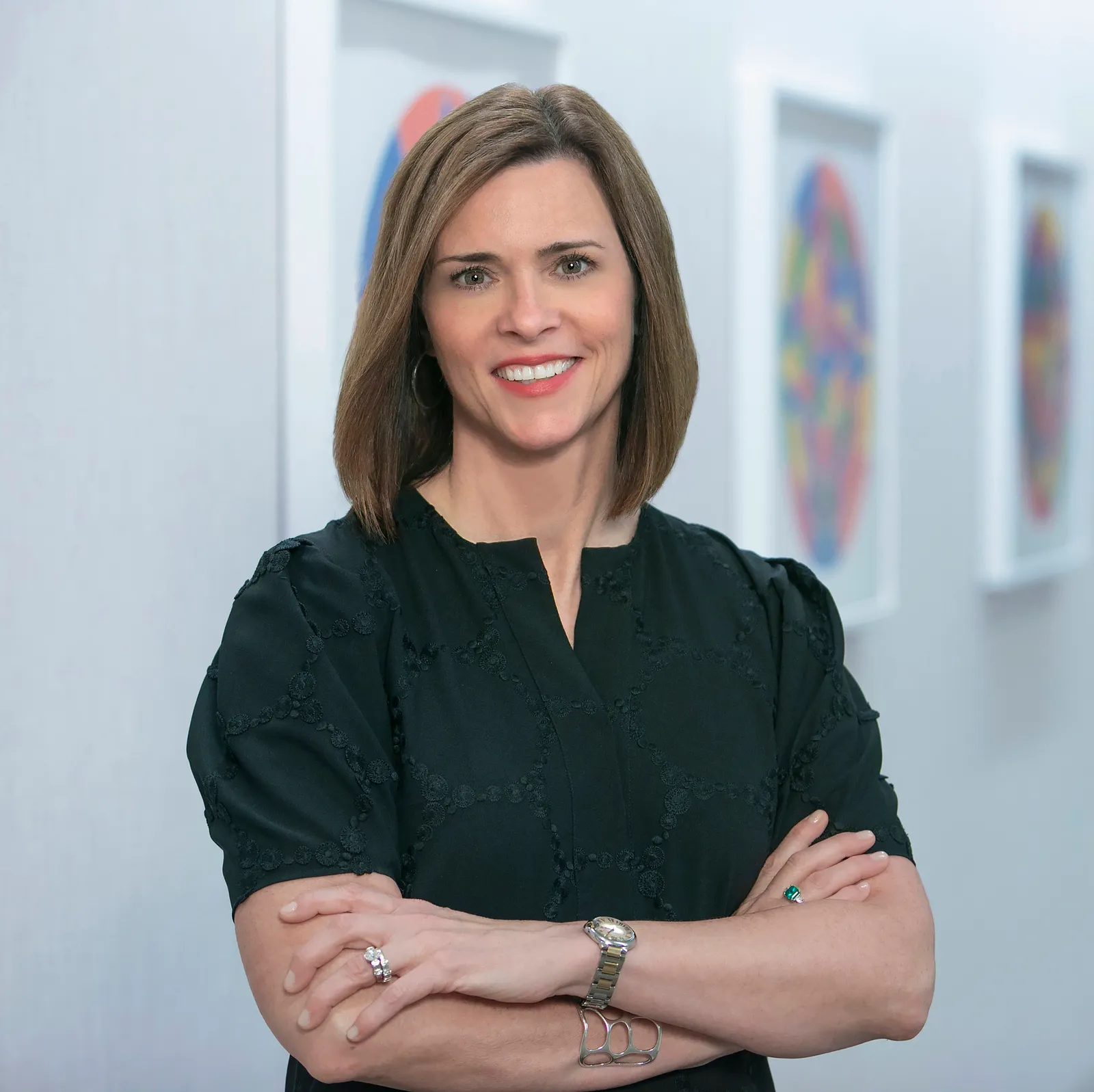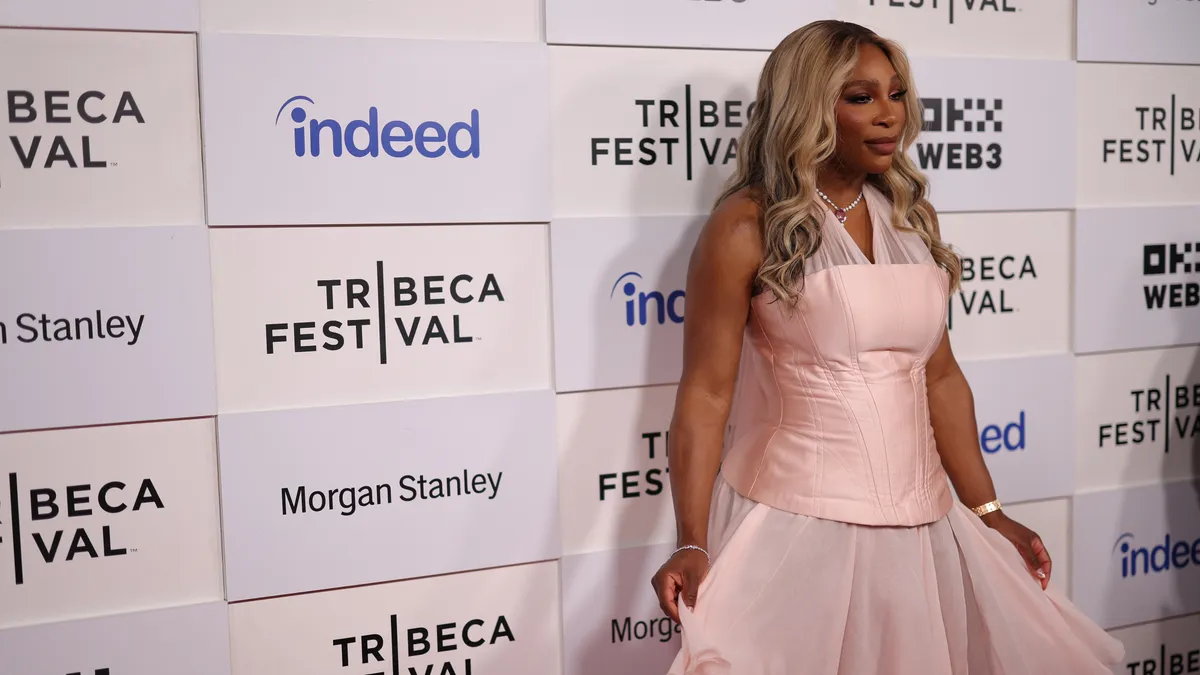In May, Serena Williams stoked rumors that she was contemplating a return to the court with a single vague tweet. But until the retired tennis legend makes it official, the best place to see her — other than Paris Fashion Week or a random Ulta store — will be "In The Arena: Serena Williams," an eight-episode docuseries that will debut on ESPN+ beginning July 10.
Morgan Stanley serves as the presenting sponsor for "In The Arena" and will be featured across in-show branding elements on streaming and linear properties, voice-over promotions within ESPN studio shows and brand mentions across ESPN cross-channel promotions. The sponsorship, a collaboration with Disney Advertising, allows the financial services company to continue an investment into women's sports that is part of its larger marketing priorities.
“We've spent a good amount of time since late 2022 to early 2023 really focused on and looking at how to lift up women's sports,” said Morgan Stanley CMO Alice Milligan. “How do we as a firm change that and move the needle on something we believe in that represents our core values?”
The firm’s investment comes amid an ad industry-wide reevaluation of women's elites sports. The market, which traditionally only receives 1%-2% of total sports investment, is forecast to surpass $1 billion in revenue this year, per Deloitte.
Morgan Stanley’s moves into women's sports and other cultural avenues reflect a broader push to modernize its nearly 90-year-old brand for a new generation of investors. Leading those efforts is Milligan, who joined Morgan Stanley as chief marketing officer in 2021 after a two-year stint as chief customer officer at subsidiary brand E-Trade.

Marketing Dive spoke with Milligan about the "In The Arena" sponsorship, how Morgan Stanley approaches purpose-driven efforts and what's on her radar in the second half of 2024.
The following interview has been edited for clarity and brevity.
MARKETING DIVE: How does the partnership with Disney and ESPN reflect your marketing priorities?
ALICE MILLIGAN: We launched a marketing campaign for the firm last year called "Old School Grit. New World Ideas," and Serena is a living example of grit and vision. She leverages her passion for what's possible and has broken down barriers in her career across the sport. It seemed like a natural fit with what we were doing in terms of our brand marketing, as well as our core values of giving back, lifting up and helping women and young girls.
Tennis is something we've really doubled down on, between our partnership with the Women's Tennis Association, our "Come Play" initiatives for young girls as part of that partnership and then having Leylah Fernandez as our brand ambassador.
How do purpose-driven initiatives fit into Morgan Stanley's larger marketing efforts?
MILLIGAN: As a firm and as a marketer, we don't just do things for press or to make the news: We do things that are consistent with our core values and what we're doing in terms of our marketing message.
When I first took over the role of CMO, one of the first things we did is get a sense of where Morgan Stanley stood in terms of our clients and prospects, and what did we want to accomplish as a firm on our growth agenda and our business strategy. What we saw was, with the purchase of firms like E-trade and Eaton Vance, Morgan Stanley not only purchased incremental, innovative technologies and capabilities, but also the opportunity to appeal to a much broader base and audience than they had before.
Expanding into younger generations, diverse audiences and women was really important as we thought about our marketing strategy: how do we start to bring to life the benefits of doing business with a firm like Morgan Stanley, because there's benefits for all, not just for a select few.
It's really important to understand the message you're trying to send and who's the audience. How do you select things that really are reflective of what you believe in as a firm versus doing things just because it's something that is popular or timely.
Outside of women's sports, what other related efforts has the firm undertaken?
MILLIGAN: We did an initiative called "Creating Space" which was all about making it more conducive for women to be in space economy by doing a partnership around women's space suits. We also partnered with Rebecca Minkoff and did a refreshed version of the banker bag for a new generation of women on Wall Street. We also recently partnered with the Met where we sponsored their Women Dressing Women event that featured women designers over time, their history and what their contributions were to fashion.
We revamped all of our social media and our social presence. We looked at doing innovative things with technology. At The Players tournament this year, we did an AR activation with Justin Rose, we did 3D billboards, we're doing AI with our financial advisors. There's been a whole bunch of things that we're doing to show the firm is modern and current, but also has that legacy and history of being able to stand the test of time during complex market environments.
As we look ahead to H2, what issues in the marketing industry are on your radar?
MILLIGAN: I would say privacy is always top of mind, especially being in the financial services industry. We take very seriously people's data and information, how that's used, how that's protected, and how we keep that secure.
Data and analytics are always an important elements as a marketer: the more data and information you can get on the results and the impact of what you do, especially in tough economic times, is really important. My team spends a lot of time just really ensuring that we're able to share, explain and communicate the outcomes from the marketing initiatives that we do.
With generative AI, we've really been looking at how best to leverage it. I think some of the initial things that we're doing as a team across my marketing organization are looking at the use cases we can test. A good number of them, at least initially, are really internally facing: How can we be more efficient and effective at how we use our marketing dollars, how we develop and distribute our content, but also looking at where people have been bolder, what does that look like and what are the results?























